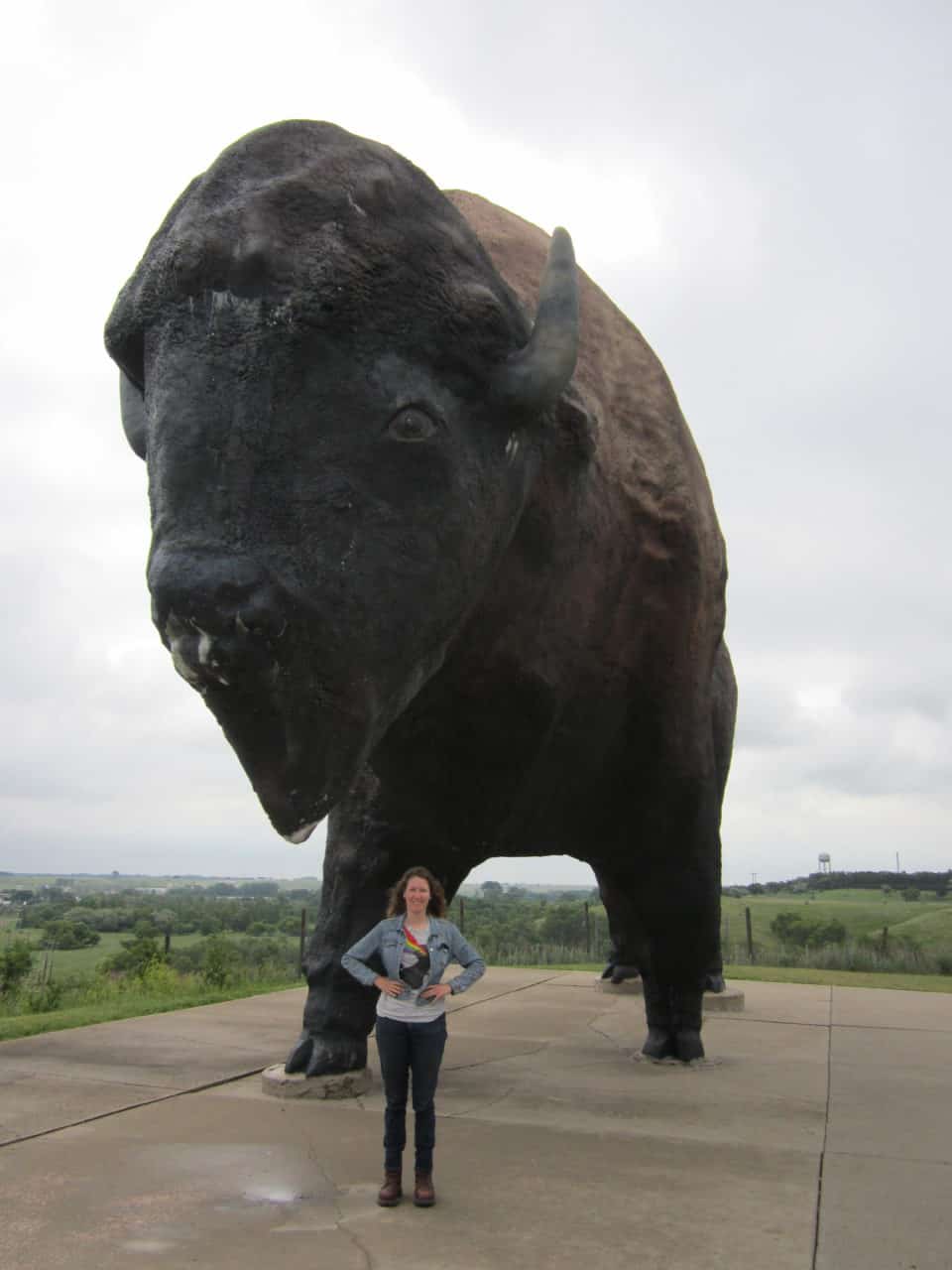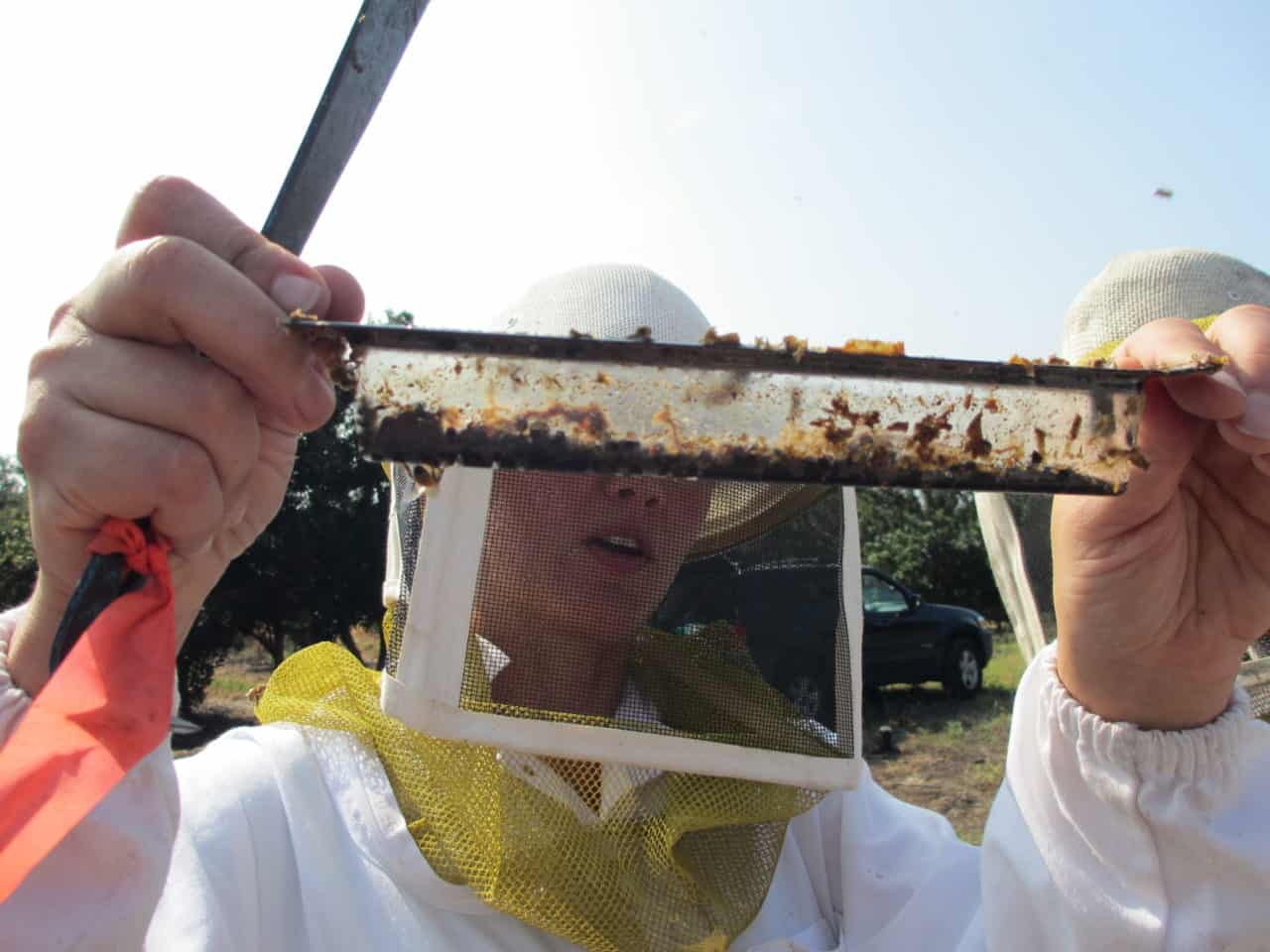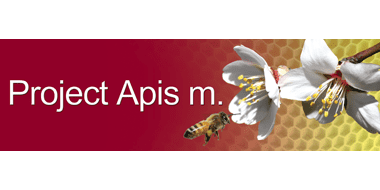Not many Californians would jump at the opportunity to spend their summer in Minnesota and North Dakota, but not many Californians work with bees either. I was glad to be given the opportunity to work with Katie Lee in the Bee Informed Partnership and pack my bags and relocate to St. Paul at the beginning of June. For the past four years I've worked with Sue Cobey at UC Davis, learning how to keep bees and raise queens, working my way up to a full time position taking care of the research hives and lab facilities at the Harry Laidlaw Honey Bee Research Facility. My…
Category: Around the Country
Spring Collecting In Northern California
Spring in Northern California has been good for collecting different native bee species along with other flower visiting insects. With summer approaching fast, native bees are thriving on yellow flowering plants such as Yellow Star Thistle (Centaurea solstitialis) and Great Valley Gumplant (Grindelia camporum). On these two species of flowers I collected 6 genera including Megachile, Triepeolus, Mellisodes, Osmia, Ceratina and Lasioglossum. There is an image below and at the end showing some of the bees collected and pinned. I also collected some other insects and arthropods in Siskiyou County. I found some swallowtails (Papilio sp.) congregating near a stream bank in the late afternoon.…
Midwest Bee Team
This past weekend, I made a solo trip halfway across the country back to my homeland of Minnesota where I will now be based. One of the goals of the Bee Team program is to expand and establish multiple Teams around the country. There have been requests to establish Teams in the Northeast and Southeast, which I really hope happens in the near future. But for now, the next Team will be established for Midwest beekeepers, focusing on Minnesota and North Dakota. What we will be doing in the Midwest will be slightly different than in California, since we will be primarily working with non-queen…
Eric Mussen
If you want to learn more about Eric, start here. Also, don’t forget to take the surveys!!
Queen Season
It is queen producing season! The first grafts happened late February and now thousands and thousands of nucs (mini colonies) are scattered across the Sacramento Valley. Normally, how it works is the beekeepers make up the tiny colonies with about a spam can of bees (that is the actual measurement in a few cases), put in a cell with a queen about to emerge, then place the nuc out into the field so the queen can mate a few days post-emergence. The beekeepers will wait until the new queen is laying eggs and generally looks healthy, then catch and cage the queen, and ship her…
Spring Sampling Season
Our spring sampling season is almost finished (in Northern CA, spring starts in January - coming from the Midwest, I initially found that very confusing) . It has been a marathon to try and get all the bees sampled before the queen breeding season starts. We've been sampling colonies for Varroa, Nosema, viruses, and hygienic behavior that the beekeepers picked out as potential queen mother colonies. The data is only really useful if they get it prior to the start of their grafting, so we have been working pretty much non-stop since the end of January to get the information to them in time. We…
President’s Address to AIA 2011
Below is an address I recently gave to the AIA First off, I would like to thank the people who worked hard to arrange this meeting. You have all noticed that we are a bit decentralized out here, and I’m sure you can imagine the logistics to organize shuttles, security, catering, in addition to planning a great program were not easy. Planning required a lot of effort and time. AIA Vice President Paul Cappy, USDA-APHIS Honey Bee Program Manager Robyn Rose and USDA-ARS Entomologist Bart Smith have done an extraordinary amount of work to plan this joint meeting with AAPA and ABRC. They deserve our…
Bees in bare almonds
Right now, beekeepers are pretty much done with moving bees across the country and into the almonds. The beekeepers we work with are doing the same thing - moving colonies from their different yard locations across Northern California into the almonds. Now, everyone is anxiously awaiting bloom. The Blue Diamond Almond company has a website to estimate bloom time. Almonds are so dependent on bees to get a crop and beekeepers are paid a premium price for their colonies (why some beekeepers come in from the east coast), so this is a really anxious time for both parties. Everyone just hopes for good enough weather…
Testing for Hygienic Behavior
Last Thursday we started with our first two days of breeder sampling at Pendell-Apiaries in Stonyford, CA. Breeder sampling includes colony assessments, hygienic, Varroa, Nosema, and virus testing. Katie did a tremendous job in the field explaining and guiding the team through the tasks that needed to be completed during the two days we spent in Stonyford, CA. We will continue the breeder sampling through the month of February and into March until we visit all 16 beekeepers participating in the project. Click on the pictures below for a description of what was going on in each.
Pesticide Cost-Share
Dr. Maryann Frazier at Penn State received funding from Project Apis mellifera (PAm) to run pesticide samples for interested beekeepers at a 50% discount of $80 for each samples for miticides or $142 per sample for the full screen of 171 pesticides, compared to $160 for miticides or $284 for the full 171 pesticide analysis without the cost-share. Beekeepers can send samples of wax, pollen, adult bees, brood, or nectar for analysis. In two to three weeks after the samples are sent in, the beekeeper will be provided with a report of the pesticides in samples, along with information about how those levels compare to…


